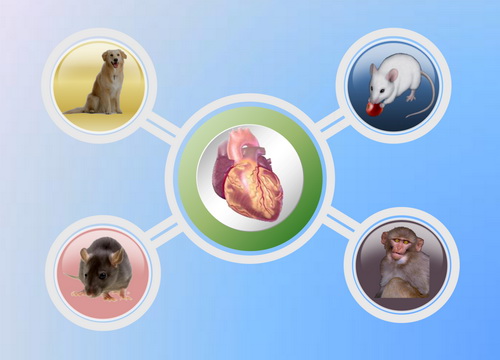
A fundamental and important parameter for developing appropriate human disease models is the knowledge of functional conservation of candidate human disease genes in the model organism. Animal models have proven useful for studying the genetic basis of cardiovascular disease (CVD), however, animal models fell short of the expected results, or even came out with opposite phenomena in many cases. According to previous work, evolutionary changes in gene expression account for most phenotypic differences between species. Characterizing expression differences between animal model and human orthologous genes can therefore provide unique insights into the modelling of human CVD.
Prof. HUANG Jingfei’s team at Bioinformatics and Systems Biology laboratory, Kunming Institute of Zoology, the CAS (http://bsb.kiz.ac.cn/) and his colleague Dr. ZHAO Yuqi compared the expression of orthologous genes in human and four CVD models (rhesus, rat, mouse and dog), based on 42 normal heart samples with high quality gene expression data.
The results indicate that several pathways showed functionally divergent, although the global expression profiles between animal model and human orthologous genes are highly preserved. Besides, differentially expressed genes (DEGs) between human and each model were identified and these four gene datasets are enriched with different molecular functions. Most of the overlapped DEGs have been experimentally proven to be associated with cardiovascular disease.
Next, they constructed a co-expression network based on intra- and inter-species variation, to elucidate the altered network organization. It indicates that these DEGs evolved as modules rather than independently.
This study could provide a valuable resource for the in-depth understanding of cardiology and the development of cardiovascular disease models.
The results have been published in Molecular Biosystems(
http://pubs.rsc.org/en/Content/ArticleLanding/2012/MB/c1mb05415e). This work was supported by the National Basic Research Program of China and the National Natural Science Foundation of China for JFH
